- Home
- Simon Winchester
The Map That Changed the World Page 16
The Map That Changed the World Read online
Page 16
I have scarce had time to sit still, write or rest for the last five weeks, but have picked up much new matter and confirmed some of the old, and collected the following list of subscribers along the way—R. Cornfield, Dr. Beales, Mr. John Grant (3 copies), Mr. Wm. James of Bristol…[he names a further fifteen potential purchasers, including a surveyor named Jeremiah Cruse with whom he would soon go into business]. It was my intention to come to London almost immediately…but the Duke of Bedford has been making such appointments for me in Ireland that I must attend to.
But soon John Debrett was making it clear that Smith did not have a prayer of making anything like the sixteen hundred pounds he had naively anticipated. Smith was disillusioned—and devastated. He sent Debrett an understandably churlish note.
A work of public utility which has engaged 12 or 14 years of the best part of a man’s life in the most laborious train of thought and observation ought to close up the past prospect with plenty. Remote expectations will not satisfy me any longer. I am certainly under no obligation to lay before the public the fruits of my labour and unless I can be satisfied of an adequate reward I cannot think of giving up more of my time.
Although money was the most visible problem in the making of the book, it was not the only one. Smith’s lack of literary confidence contributed too, as did his curious indecisiveness, his seemingly pathological need to procrastinate. It was to become a lifelong affliction.
On some days he would decide to abandon the whole affair: “Making little progress from not being able to please myself in the mode of expressing my thoughts,” he confided to his diary, “and from foreseeing great difficulty in arranging such matters for a book, and also from considering that I was losing two guineas a day for the chance of a small profit by the book, I wisely decided to stick to my profession.” Yet on other days he would seem reenergized, eager to start afresh: In May 1802, for example, we find pages from his daybook recording a number of small victories over his indecision:
Tuesday May 11: wrote several pages on the formation of the strata and the effects of the deluge &c….
Wednesday May 12: collecting together loose memorandums…writing several small pages….
Saturday May 15: considering about plates to be engraved…looking over and sorting out maps….
Sunday May 16: After breakfast wrote eighteen pages of observations….
Yet it was not to be. The relationship between Smith and Debrett deteriorated fast, with the geologist asking far too much, the publisher offering far too little, the project becoming subject to interminable delays and snared in arguments between the pair. In the end it was the money that did it in: Debrett went bankrupt in 1802 and then again in 1804, and Smith’s hopes of having his work offered between hard covers to his enormous list of subscribers, or to the public at large, swiftly died. The book was never to appear. And Smith was not to write anything of geological importance for nearly a decade.
But the setback then seems to have infused him with a new but very different sense of purpose. Although he had been forced to abandon his writing, his new circumstances served to provoke him into a new frenzy of travel. All of a sudden he was accepting commissions throughout the length and breadth of the country—Norfolk one week, Dorset the next, Yorkshire today, Shropshire tomorrow, and, with the duke of Bedford’s ready help, Ireland too. He began a period of intense restlessness, burning up the stagecoach miles like a traveling salesman, seeking out the work, and at the same time seeking out the rocks and fossils that unrolled and unraveled themselves before him.
The notion of publishing something still nagged persistently at him like an aching tooth. Maybe it should be a book, or maybe it should be something far grander, far more ambitious—maybe some document that demanded less intellectual energy, less cerebration, but that could perhaps emerge as a direct consequence of all his wandering, his collecting, his fieldwork, his observing. Maybe, if it was not to be a book, then it could and should be a truly wonderful, majestic, all-encompassing map.
And thus, by circumstantial happenstance, was the plan for the great map formally conceived. It was an idea that had nudged at him for years, ever since his first youthful attempts in Bath. The maps he had made in those early days were rudimentary enough, either devoted only to discrete localities or performed over a larger scale with a broad-brush vagueness that made them relatively simple to complete. But now it began to seem to him that a grander, more ambitious map could properly memorialize him—a map of the whole country, closely detailed and highly accurate. This new map, he thought, would reflect, in so much more appropriate a manner than a book, his special talents.
To make such a thing would require a great deal of time and a lot of money. And so he set about to gather the funds and rally yet more public support for this new project, and at the same time accelerated once more his determined wanderings. He traveled on commission, draining, surveying, mapping—and gathering as he did so yet more and more information.
“I intend to come through a part of Hampshire on my way westward,” he wrote to one Samuel Collett in May 1802, “for the purpose of seeing a few places where the chalks and clay strata turn round the end of your hills.” And to Richardson back home in Bath:
I have collected a great deal from the North of England and Scotland. Our Mendip limestone, with St. Cuthbert’s Bead, goes out to sea at Holy Island, where they are found in great plenty, and are called by this name from the saint of the island. I have found fossils in red marl of Staffordshire, connected some limestones, and nearly connected some ranges of the coals.
It was all information that would soon enable him to sketch in his mind, and with steadily accumulating detail, an outline of what he now surely wanted to produce: a definitive portrait of the immensely complicated arrangements of the strata, a chart of the underworld of his country.
11
A Jurassic Interlude
A magnified cross-section of a typical oolitic limestone
On early summer Saturdays in the 1950s when the weather was fine, the sisters of the Blessed Order of the Visitation liked nothing more than to take their little convent boys swimming in the sea. To keep us more biddable they tried to tire us out by walking the entire way, taking us up and over the little range of steep Jurassic hills that lay between school and the beach.
I think that none of us appreciated much of the geology at the time; and nor, I daresay, did the nuns—but we all knew that the landscape it formed was unusual and very beautiful. And although my own memories of those long, long walks have been more than a little colored by the harshness of the boarding-school regime (I was six and a half; and the punishment for my frequent dawdling on Saturday walks was six strokes on the hand with a bamboo cane, and a big wooden spoonful of castor oil forced down my throat by an unusually ugly sister who sported a luxuriant blond moustache), there are delights about it that linger yet.
There was a simple routine to the excursions. We would set out from our convent in the old rope-making town of Bridport, in Dorset, and walk for a while beside the main road that took westbound travelers on toward Devon and Cornwall. A mile or so out and we reached a village called Eype, where we would turn south and stop to rest and play games on a sloping meadow thick with ferns and yellow gorse. Then we would plunge off again uphill, into a rabbit warren of steep lanes that had been carved into small canyons of a honey-colored sandstone, and that were concealed from the landscape beyond by hedges six feet high, with a feel about them like front-line trenches—that of course we as brutish little boys very much liked. Occasionally there would be a five-barred field gate, and through it tantalizing glimpses of stands of rolling wheat, warm and golden in the early summer sun.
The roadway in these lanes would be littered with small pieces of rock that had broken from the canyon walls. We would kick them around, imagining them to be grenades or spare ammo, and we would scuff our shoe leather white on their sharp edges, until a disapproving escort nun wagged her finger and reminded us of t
he probability of public punishment in the school refectory the next morning. The list of offenses fit for the caning-and-castor-oil routine was very long.
After fifteen minutes of slope that had us puffing and panting upward, the road flattened and widened, the canyon walls fell away, the summit meadows appeared, and ahead was the vision that we had all awaited—the sun-dappled hammered-pewter surface of the English Channel—the sea. Up here there always seemed to be a cool onshore breeze blowing up and over the summit. It was tangy with salt and seaweed, and the way it cooled the perspiration was so blessed a feeling that we would race downhill into it with wing-wide arms, and it would muss our hair and tear at our uniform caps, and we would fly down toward the beach and to the surging Channel waves that chewed back and forth across the pebbles and the sand.
I seem to remember that by this point in the weekly expedition the dozen or so of us—all called by numbers, since the convent’s peculiar regime forbade the use of names; I was simply 46—were well beyond caring what the nuns might think: The ocean was by now far too magnetic a temptation. Once in a while we might glance back at them as they stood, black and hooded like carrion crows, fingering their rosaries and muttering prayers or imprecations—but if they disapproved of us tearing off our gray uniforms and plunging headlong into the surf, so what? This was summer, here was the sea, and we were schoolboys—a combination of forces that even these storm troopers of the Blessed Visitation could not overwhelm. So we stripped down to our trunks; we paddled, we swam, we splashed and fooled around in the green water and spray for what seemed hours, shouting ourselves hoarse, forgetting everything in our careless summer delirium.
And then, all too quickly, the heat of the day fell away, and it became late afternoon. The sun was suddenly lower, the shadows longer, and in the sea breeze was the first indication of the evening chill, prompting the occasional shiver and excited comparisons of goose pimples. The sea would be enveloped in a pale purple haze. By now, all weary from swimming, we would retreat some yards from the seaside and begin to play in the still-warm sand. We would build castles, collect starfishes or dogfish egg sacs or shells, or bury one another in tombs that would fill coldly in the slow-rising tide.
It was during one of these lazy after-swimming reveries that I found my first Jurassic fossil. It was an ammonite, coiled in repose like a small and fat spiral spring, the relic of a shell that the textbooks said once held a squidlike animal that could pulse its way slowly and silently backward through the warm and life-rich seas of the time. Although I have long since lost it, I remember it only too well. In my mind now it seems a much-loved talisman of those curiously contented days.
The fossil was a smooth, reddish, circular object that sat nicely in the palm of my hand, weighing perhaps a quarter of a pound. It was smooth enough, I thought at first, to be used as a skimmer on the flat surface of the sea. It was almost perfectly whole, not much bigger than an old English penny piece, maybe an inch and a half across, and in comparison with other ammonites I had seen in museums, it seemed to have almost no coils at all—its circumference was simply a circle that folded into itself and then vanished. In its center was a small whorl; and its flanks were traced with sinuous lines, presumably marks that showed how its shell grew, season by season or day by day.
I gazed closely at it, enraptured by its strange delicacy: I licked it to remove some of the sand, and used a fingernail to try, unsuccessfully, to pry away small concretions—these would yield only to the point of a nail file later in the evening. A few of the other boys seemed interested—I remember still that numbers 6 and 25 in particular had shared my fascination and had asked to have a closer look.
The beast evidently left as much of an impression on them. Many years later I came across number 25—by then he had a name and was a senior partner in a private banking firm—while walking along Connaught Road in Hong Kong. It was during an evening of reminiscence some while later that he asked me if I still had that pretty little ammonite? But no, I said shamefacedly, I didn’t; and neither of us could remember much more about the day it was found, nor, to our greater shame, could we remember what 6, the other boy who had liked it, was really called.
All this I may have lost or forgotten—but I still remember exactly where I found the fossil; and, knowing that William Smith had been to the very place himself, sometime during the fifteen years that he wandered around England exploring and making ready the details of his great map, I decided that I had to go back there. I thought it would be helpful to make my own brief tour of the Jurassic, to follow the outcrop of England’s most distinctive raft of rocks just as Smith had done, from coast to coast, all the way up to Yorkshire from down here among my school memories, in the magic depths of South Dorset.
Maybe by doing so I would come to learn a little more—learn not simply about the topography of Middle England, nor of the lithologies of the Middle Jurassic nor even of the paleogeography of the era—but about William Smith himself. Perhaps if I took the journey he had, I might gain some clue as to the extent of his achievement. And though I would never quite feel it as he had done—I would never quite know the discomfort of bouncing in a springless chaise on a rock-strewn turnpike, or suffer the cold comforts of a windy coaching inn, or the misery of arguments with an undertipped ostler, still I might come to feel just a little as he had done, all those years ago.
And I had it in mind that, despite the newness of all that now rose on top of the landscape—despite the motorways and power pylons and cell-phone masts, the new cities and New Towns and the forests of skyscrapers and suspension bridges and landmarks that had been built in styles and for reasons that could barely have been imagined two centuries ago—there would be something about the outcrop of the period that would be discernible still. The imprint of geology has an immense power over landscape: the imprint on England of the Middle Jurassic would, I imagined, still be there, underlying everything, imperturbable, immovable—and quite probably, just as in William Smith’s time, instantly recognizable.
Down at the starting point, forty years on—and the village of Eype still looked much the same. The main road was a divided highway now, with traffic thundering endlessly to and fro along it, and not a line of schoolchildren—who would have been in great peril from the frantic lorries—anywhere to be seen. The lanes at the top of the Downs were just the same, though—sleepily unpopulated, and incised into the sandstone so deeply that one still half expected duckboards and mud, and the thud of wartime shellfire. And then from on top of the hill, sighing and slumbering below, was the English Channel, just as it always must have been, a soft surging sound on the gravel shore, and with distant ships crawling along its steel gray surface, silhouetted in the southern summer sun.
I walked down to the beach, and, remembering just where I had found the little fossil, turned promptly left to walk the few hundred yards to where I might discover another. In turning left, I was now facing east. A map would show something of a geography that my years in Dorset had allowed me to know quite instinctively. The counties of Devon and Cornwall ranged behind me. Brittany was invisible a long way off across the sea to my right. The rich farming valleys of Thomas Hardy’s Dorset were up above me, where I had come from, to my left. And, most significantly to any seeker after geological truth, unseen but very clearly marked on any map, the White Cliffs of Dover lay a hundred miles away, directly ahead.
And in that single topographic fact is a clear and present indication of the simple existence of geologic time. The white Dover cliffs are made of chalk, which is the best-known rock of a period* that, identified by the fossils it contains, has long been known as the Cretaceous. The rocks here in this part of Dorset, on the other hand, were all—and have been similarly identified by another group of very different fossils—laid down during the period known as the Jurassic.
For anyone today to walk eastward from Dorset to Dover along this coastline, just as William Smith had walked eastward along the Somerset Coal Canal from Dunkerton to
Limpley Stoke some two centuries before, is to walk forward in geological time—is to walk away from and out of the older rocks and toward and into the newer. The cliffs that ranged before me now were each made of rocks that were successively younger than those in the cliffs that ranged behind me. The more distantly ahead of me they ranged, the younger and the younger they became—so that those lost in the shimmering haze of the afternoon belonged to whole stages and epochs of geological time that were far more recent than those beside and behind me.
It was the gentle and uniform southeasterly dip of all these outcropping rocks that made this possible: Had the rocks not dipped at all, but remained horizontal all the way along the coast, the outcrop would be entirely the same, the topography unchanged, the crops above and the view below unchanged from Dorset to Kent. It was the dip that allowed the history of the underworld to be on such dramatic display—the same gentle and uniform dip that had made all this history so suddenly clear to William Smith in the hills and valleys around Bath.
As the cliffs rose and fell in ranks along the coast in front of me, I could see with consummate ease exactly how each one, because of the bread-and-butter arrangement of its rocks, was geologically different from another. Here beside me the cliff might be made of a Jurassic sandstone capped by a limestone; but two miles further eastward down the coast the same limestone that here was on top and formed the cliff’s cap might well form the base of the next range of cliffs. Layered on top of it there would be other rocks—shales maybe, or marls, clays, iron-stones, perhaps more limestones, more sandstones—and with each stratum on top younger and younger than those below until, a hundred miles away, way past the counties of Hampshire and Sussex and well beyond the towns of Bournemouth and Southampton, beyond Brighton and Eastbourne and the great promontory of Beachy Head, there would be the White Cliffs themselves, the chalk.

 The Surgeon of Crowthorne
The Surgeon of Crowthorne Korea: A Walk Through the Land of Miracles
Korea: A Walk Through the Land of Miracles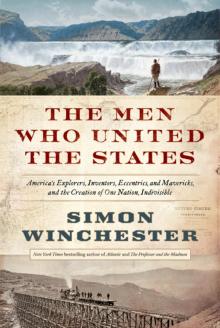 The Men Who United the States: America's Explorers
The Men Who United the States: America's Explorers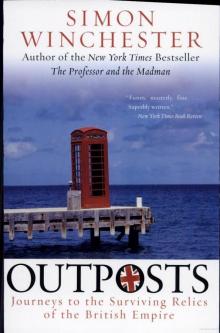 Outposts: Journeys to the Surviving Relics of the British Empire
Outposts: Journeys to the Surviving Relics of the British Empire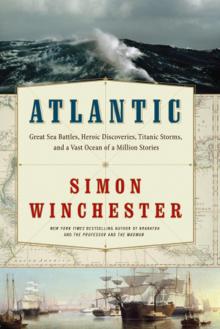 Atlantic: Great Sea Battles, Heroic Discoveries, Titanic Storms
Atlantic: Great Sea Battles, Heroic Discoveries, Titanic Storms The Professor and the Madman: A Tale of Murder, Insanity
The Professor and the Madman: A Tale of Murder, Insanity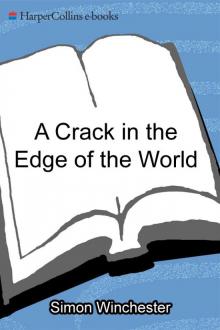 A Crack in the Edge of the World
A Crack in the Edge of the World The Perfectionists: How Precision Engineers Created the Modern World
The Perfectionists: How Precision Engineers Created the Modern World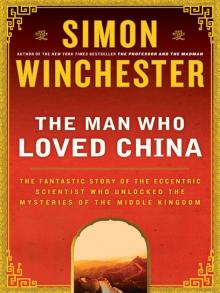 The Man Who Loved China: The Fantastic Story of the Eccentric Scientist
The Man Who Loved China: The Fantastic Story of the Eccentric Scientist The River at the Center of the World: A Journey Up the Yangtze
The River at the Center of the World: A Journey Up the Yangtze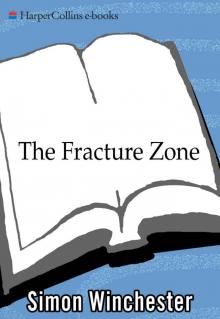 The Fracture Zone: My Return to the Balkans
The Fracture Zone: My Return to the Balkans The Map That Changed the World
The Map That Changed the World Krakatoa: The Day the World Exploded
Krakatoa: The Day the World Exploded The Man Who Loved China
The Man Who Loved China The River at the Centre of the World
The River at the Centre of the World Bomb, Book and Compass
Bomb, Book and Compass The Perfectionists
The Perfectionists The Meaning of Everything
The Meaning of Everything Exactly
Exactly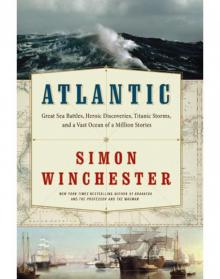 Atlantic
Atlantic Korea
Korea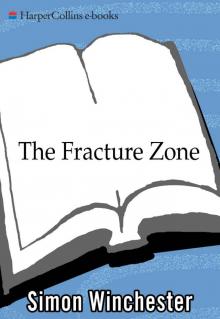 The Fracture Zone
The Fracture Zone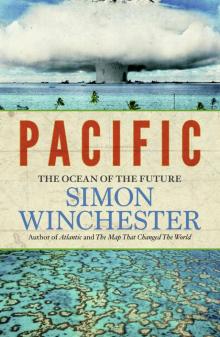 Pacific
Pacific Krakatoa
Krakatoa The Professor and the Madman
The Professor and the Madman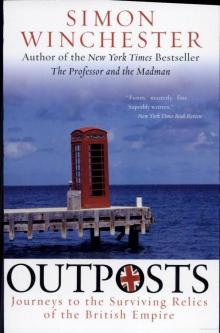 Outposts
Outposts